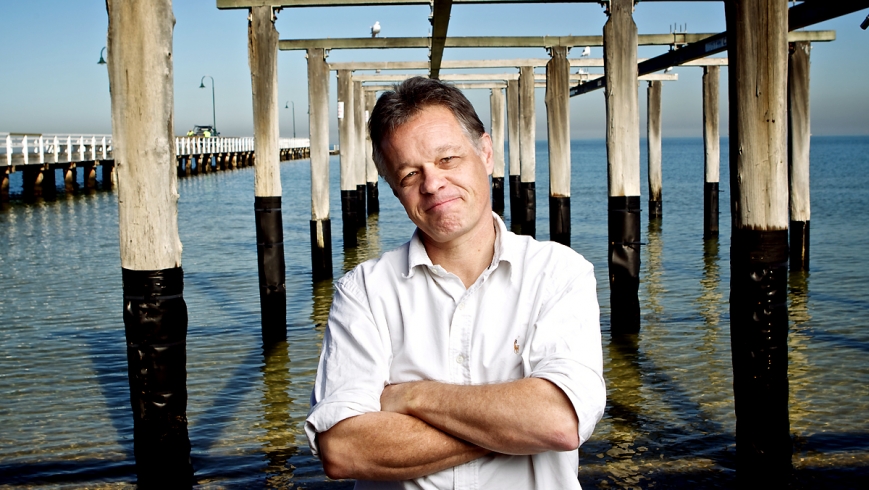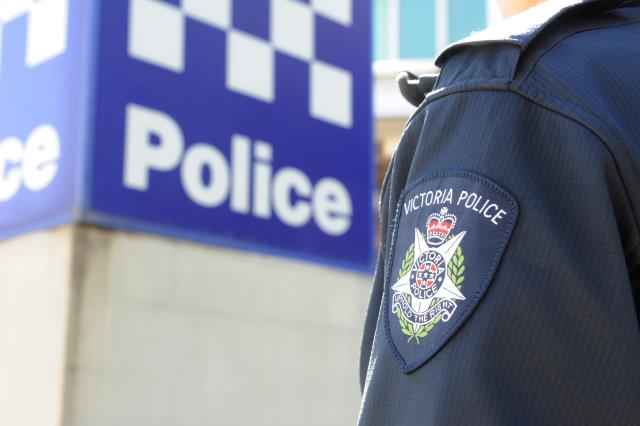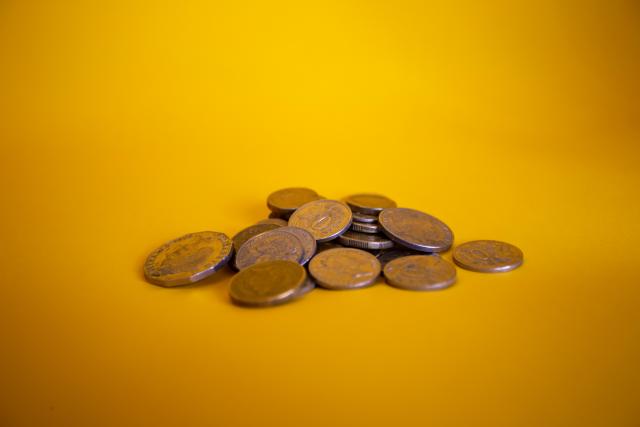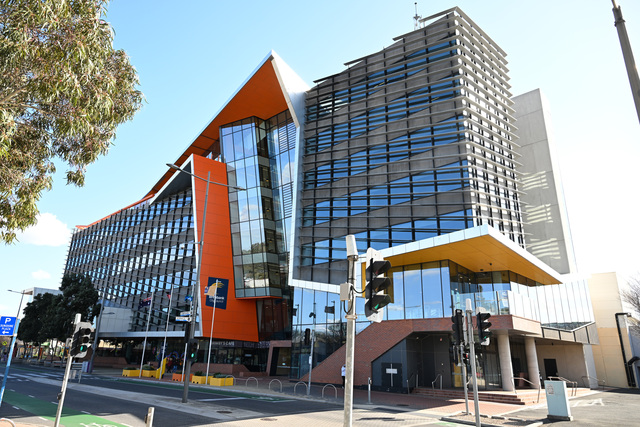The boy stood on the Northern Star’s deck, burning with excitement. As the last sail-away streamers surrendered their tie to the Southampton shore, he set his sights on the horizon – an eight-year-old sailing saucer-eyed toward the future and the man he would become.
Stripped of the teasing jungle of Animalia, it’s not so hard to detect author-illustrator Graeme Base in his latest work, an animated short film titled The Gallant Captain. Adapted from his 2010 book The Legend of the Golden Snail, the film voyages across the high seas of the imagination of a lad called Will, accompanied faithfully by his marmalade cat.
One of the headliners at this year’s Little Big Shots Film Festival – Australia’s biggest children’s film festival – The Gallant Captain has already received widespread international acclaim, most recently winning Best Short at the 2014 Aspen ShortsFest, which carries with it a much sought-after Oscars accreditation.
But perhaps the person most animated about this “sweet, sweet thing” of just eight minutes’ duration is Base himself. “I have been trying to make a film for 20-22 years,” he says.
At 56, Base is something of a renaissance man. A qualified graphic designer who turned to illustrating books after being sacked from an advertising agency, he has become a titan in children’s literature, with 18 books and global sales exceeding six million, since his 1983 debut My Grandma Lived in Gooligulch.
He recently sent his publishers a 10-year plan for new books while quietly cogitating design ideas for a children’s stroller, various musical instruments and a vacuum cleaner magically contained within its tube. Yet, he insists, “in a heartbeat I would push all that away and work on film”.
Screen Australia certainly got value for the $150,000 it put up to enable Base to make his directorial debut. Base painted every wave, every cat hair, every knit stitch of Will’s jumper, each component part of his telescope, which was then “wrapped around 3D geometry” to give The Gallant Captain the depth and texture of a book come to life.
Base wryly reflects that, 20 years ago, Hollywood probably blew a quarter of that amount just flying him back and forth when there were serious plans to transform his book The Sign of the Seahorse into an animated movie.
His tantalisingly close encounter with Steven Spielberg still smarts, though this was not directly the fault of either man.
“I’d received some bullish advice from the dealmakers in America as to what I should ask for and, when the rebuttal came, I should have just rung a taxi, gone to the airport, flown over and fixed it,” he says. “But I didn’t. I waited for them to work it out and it never got worked out, so that was the end of it.”
A second chance to have a story made for IMAX was similarly scuppered. “I still feel like I was lined up directly in front of the holes and missed the opportunity,” he says.
Since working with the boutique Melbourne-based animation studio The Lampshade Collective and co-director Katrina Mathers, Base has not only seen the dream come to screen, but has also discovered a new pleasure in collaboration.
A self-confessed control freak, he admits he finds it difficult to take notes from others.
“I don’t give my work to a publisher and say, good luck. I will be at the press site, I will travel overseas to check the first proofs and say, ‘No, no – the endpaper colour is a little dense’,” he says.
The need to be in creative charge led to the one big falling-out of his life when his technofunk band, Rikitikitavi, imploded on the brink of publication of Animalia, Base’s 1986 breakthrough book that sold three million copies and established him as an internationally celebrated children’s author.
“Looking back on it now, I am ashamed at the way I conducted myself, forever telling everyone what to do,” he says.
The one considerable consolation about the band’s demise was that he married the lead singer, Robyn, a fellow artist and teacher who has created such playful installations as Dessert Wastes, featuring meringue icebergs floating on black jelly seas, at the Newport Substation in 2009.
The couple and their now-adult children, James, Kate and Will, are living in rented digs in Albert Park while their next home – an old church down the road – is being renovated.
The sea, or perhaps more specifically the point where it meets the horizon, still keeps him firmly anchored by the bay.
“To some extent that little boy in the boat is me without doubt,” Base says as we chat in his lounge room in the long-necked shadow of a pair of wooden giraffes, bought on a trip through Africa that inspired another of his landmark works, The Waterhole.
There was no marmalade cat when British-born Base, his brother Patrick and their parents set sail for a new life in Australia in 1966. Spending five weeks on the open sea was, for a young lad, “a stunning, absolutely life-changing experience”.
How different the story of Graeme Rowland Base might have been had he remained in Buckinghamshire instead of migrating to Box Hill?
“I’ve always felt a sense of opportunity here. It sounds trite, but there was this sense of an open vista, that you might be the first to walk into that valley or see that view. In England you feel, no matter where you stand, there were three or four centuries of villagers there way before you.”
Certainly, his last school report from England painted the prospect of a less rosy alternative ending: “Graeme is a born leader of other children, unfortunately usually in the wrong direction.”
“I don’t know that I was all that bad,” he laughs, “I was just one of the lads.”
The extension of this was that when he came to Australia he wasn’t.
“This definitely isn’t one of those stories about some poor little Pommy kid being beaten up behind the shelter sheds, but I was aware that I needed to somehow re-establish myself in the schoolyard.”
He did this by drawing.
Now, with a back catalogue that includes five books illustrated for other people, 18 books of his own plus adaptations including a symphony, several stage plays and a 40-part TV series, Base is seeking once again to win over the schoolyard in a completely new guise.
Will The Gallant Captain fare better than Shaun Tan’s Oscar-winning The Lost Thing, which was awarded third place by the 2011 Little Big Shots children’s jury – behind a film made by teenagers titled How Not to Get A Girl?
Little Big Shots president and co-founder Nick Place is giving nothing away. One of the things Place most loves about the festival is that the children wield the power.
Little Big Shots has come a long way since Place and a colleague, Marcella Bidinost, first directed the flickering frames of an idea into full production in 2004.
Place, a former film reviewer turned novelist, conceived of a film festival for children after finding his own children were effectively locked out of events such as the Melbourne International Animation Festival which, being “unrated”, only allowed over-18s.
When Place and Bidinost started looking for content they struck “rivers of gold”.
“There are amazing films being made for kids, by kids and about kids every year,” Place says.
This year is no exception, with more than 450 films up for consideration and 105 on the program. They range from the “happily stupid” to the deeply moving, with offerings for all age groups.
“Of course we have fun, but it’s always been important to me that we have this real meat and substance to the festival,” Place says.
“I’ve always wanted Little Big Shots to bring the world to Australian kids in a meaningful way.”
This, the 10th anniversary of Little Big Shots, will also likely mark Place’s last at its helm.
“When I went into this I was writing kids’ books, I was a film reviewer for The Sunday Age and my own kids were aged 11 and 8,” says Place. “Now my boys have grown up and I’m writing adult crime novels so I’m in a different space.
“It’s time for someone else to throw their energy and ideas into it so it continues to evolve, but I don’t think I’ll step away completely. I love Little Big Shots, what it is and what it is about. There’s still nothing that makes me happier than watching families walk out of the cinema and everyone’s shining.”
Little Big Shots Film Festival
This year marks the 10th anniversary of the biggest little person’s film festival in the southern hemisphere. From a mountain of more than 450 submitted films, 105 movies – made for kids, about kids and by kids – have been selected for the Little Big Shots (LBS) birthday screenings at the Australian Centre for the Moving Image and Artplay Birrarung Marr. Highlights include:
Bitseller | A wordless wonder about the battle that ensues when an old author has to replace his trusty typewriter (mum, what’s that?) with a computer.
Wildebeest | A shockingly funny one-minute demonstration that sometimes being proved right is not worth the cost.
Hopfrog | A crazily hypnotic Russian film for little kids nominated by festival director Ben Laden as his personal favourite of this year’s lineup.
One-Way Ticket to Bussum | About an adopted Indian boy’s exploration of his roots, it offers a more meaningful documentary experience for those aged 11 and up.
Festival » There will be special screenings of selected packages on May 31 and June 1, with main sessions from June 6-9. There are 10 packages to select from, including those for Tiny Tots (age 2-5) and Little Tykes (age 3-7) to Big Kids Flicks (age 11-15).







